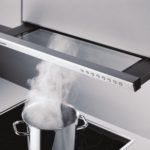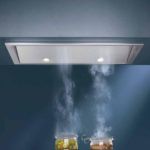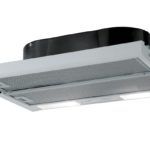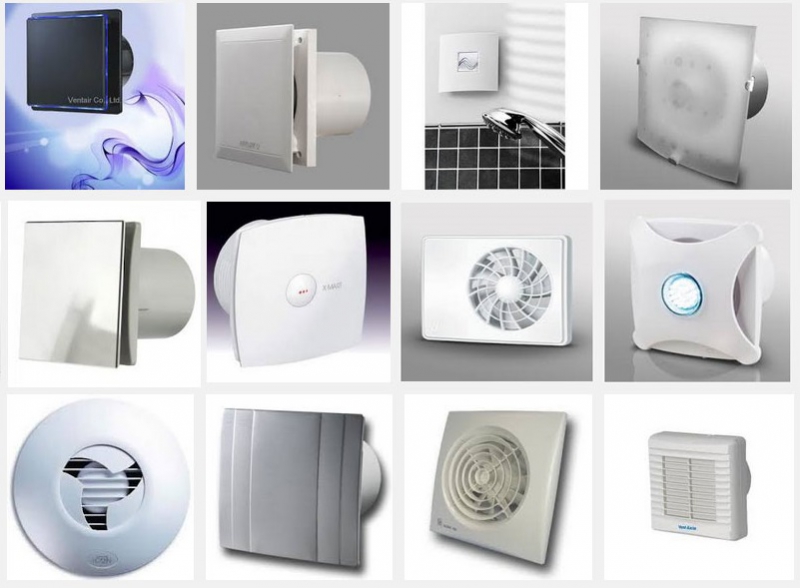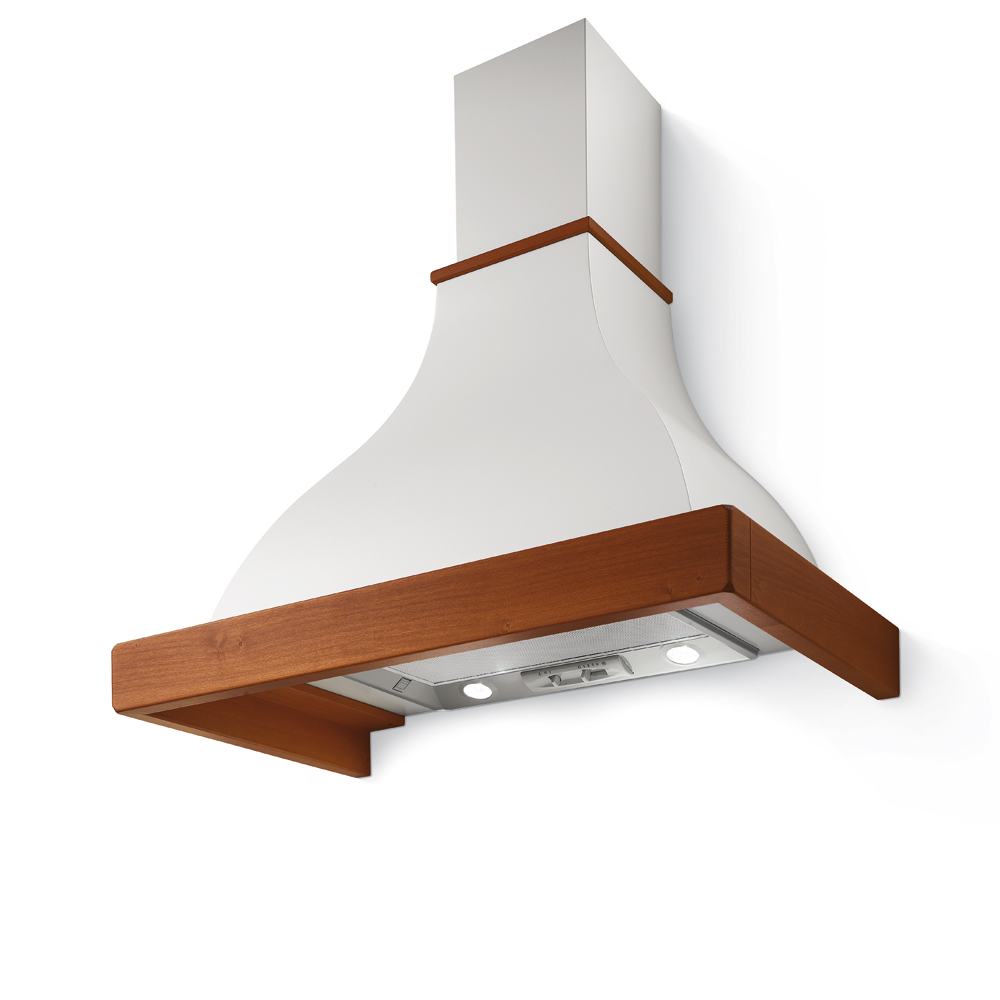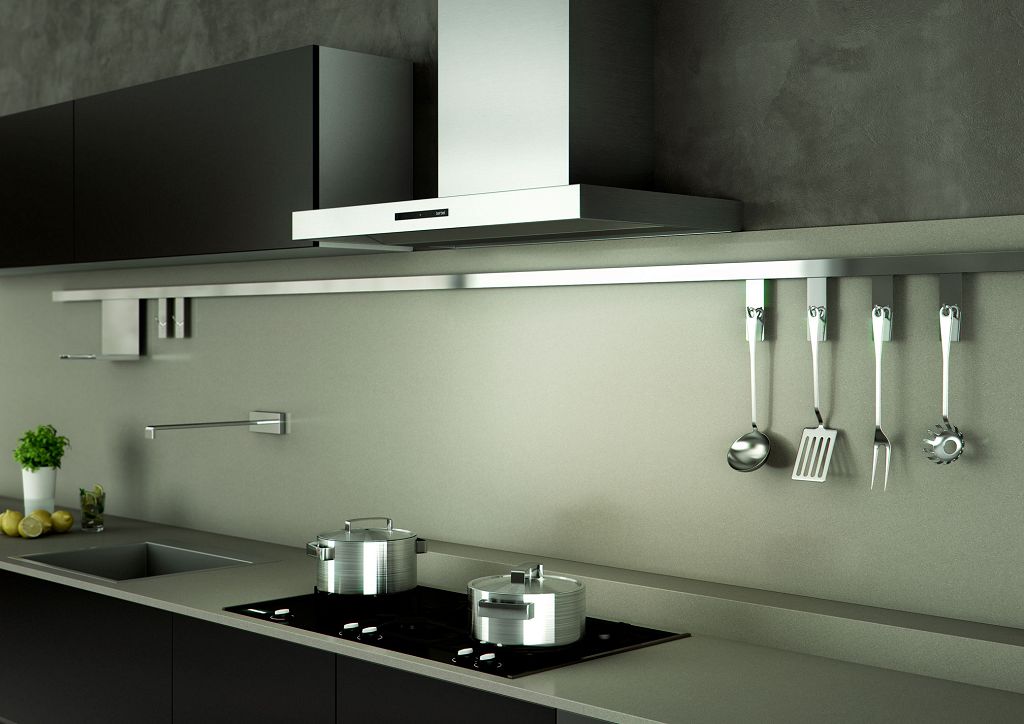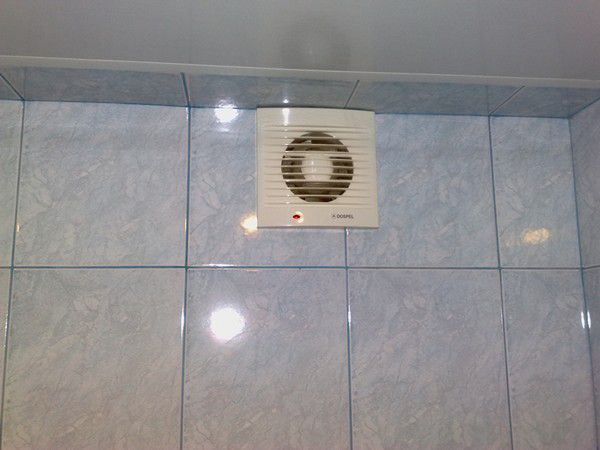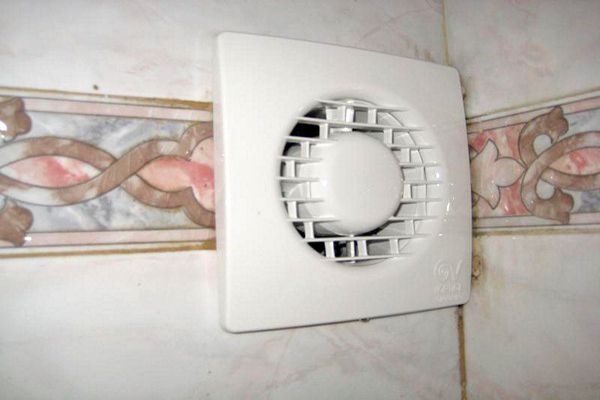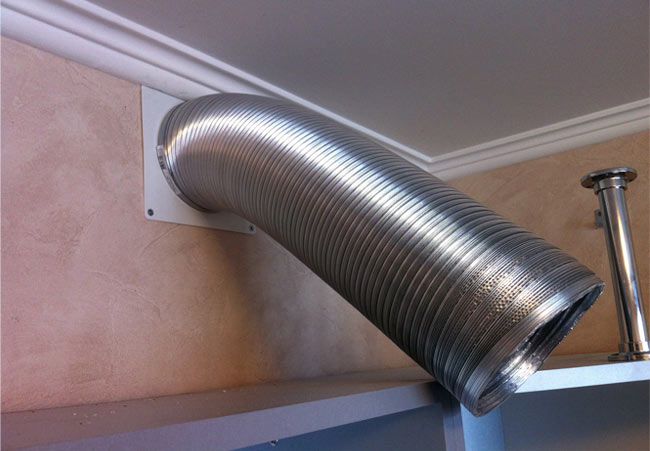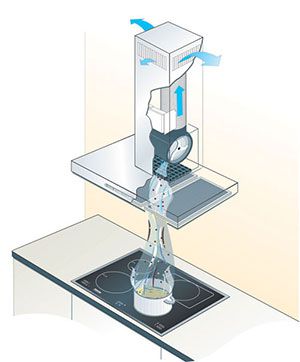A modern kitchen can no longer be imagined without a cooker hood. This convenient and functional device guarantees the absence of steam, heat accumulation, removal of fat and other substances released during cooking. Without such a device, it would be quite difficult to be in the kitchen, especially in summer, preparing breakfast for a large family.
Today the market offers any model: built-in, flat, dome, island. However, more and more popular are models that can perfectly fit into the interior, or even better - hide inside a cabinet or other kitchen structure. This saves space and ensures the perfect headset design.
What are the hoods
Types of hoods for the kitchen, if the built-in model is considered, can be divided into large groups:
- telescopic, capable of taking up more space in working order and guaranteeing steam removal;
- a permanent rectangular structure, in size corresponding to the area of the hob or gas, electric stove;
- devices that are mounted in a cabinet. Such a quiet built-in range hood matches the depth of the specific kitchen set.
As narrow groups can be considered a corner built-in hood, which is very convenient in small kitchens, as well as designs that can replace bulky and extremely expensive island devices.
Flat hoods as option for built-in
The flat cooker hood is a very popular model on the market. They can easily act as built-in ones, as they are easily mounted under cabinets with a ventilation outlet through the cabinet. This is a rather attractive option for many, which has a lot of advantages:
- with a solid body and a cylindrical air intake rod, the flat hood is practically silent;
- you can reliably cover the entire surface of the hob or stove, even if the upper kitchen cabinets are narrow;
- mounting to the wall is a guarantee that the hood will not transmit vibration to the cabinet, as well as additionally load its fasteners.
However, the main advantages are that the installation of such a device often does not even require alteration of the upper cabinets. Especially when it comes to a model with air recirculation.
Hoods for large kitchens
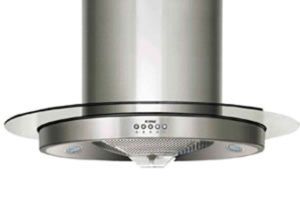
The design, when the hob was in the middle of a large kitchen, and a huge and heavy island hood hung over it, is a thing of the past. The disadvantage of this design is obvious. The island hood only takes up space above the cooking zone. But a slab or module with a surface cannot be alone. Usually, the square located in the center is also a place for cutting, serving, sometimes there is even enough space to sit down to have a bite.
Whole suspended, ceiling-mounted wardrobes are in vogue. And the built-in hood in this case is much more attractive than the island one. It can be positioned so that it is discreet and performs well. In addition, the design has another advantage. An island hood is a round hood that requires a rigid vertical upward duct. The built-in hood does not have this disadvantage.
Convenient and hidden
Telescopic built-in hoods are the most interesting and beneficial for use in the interior of the kitchen. When folded, they are compact and neat. And when put into working condition, the telescopic hood effectively neutralizes steam and ensures the removal of unpleasant odors.
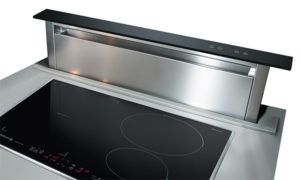
The telescopic hood works according to the following principle:
- part of the structure - a surface that can be pushed forward and retracted into the body;
- telescopic hood (horizontal) draws in air through the technological gap almost horizontally;
- steam, rising up, bumps into the extended surface, after which a quiet telescopic hood quickly and completely removes it.
A separate, expensive, but gaining popularity segment of the market is the vertical telescopic hood built into the kitchen surface.
It is usually located near the cooking zone and, when inactive, is hidden flush in the worktop. When the cooking process begins, the telescopic part of the hood rises and the pumps effectively remove steam and odors. Neither flat, nor island, nor any other type of hood can boast of such functionality.
What are the pros and cons of this or that option
Let's consider separately what advantages and disadvantages certain built-in hoods have:
- Flat hood. Its advantages are that it can be mounted on the wall, no matter how thick the top cabinet of the kitchen unit is. However, the disadvantages are that a relatively flat wall is needed, and the installation of a hood on it determines stationarity - the upper cabinets cannot change places completely freely, for example, if the owner wants to arrange the storage areas more conveniently.
- Built-in classic hood mounted in a cabinet. These are the smartest options, quiet, compact, designed to fit a variety of standard sizes of cabinets, hobs and gas stoves. You can decide exactly which model will fit into the interior.
- Telescopic kitchen hoods are silent, but they always require a powerful fan. Therefore, they use cylindrical types of intakes, which are almost silent, but consume a lot of power.
In any case, today the built-in hoods, which are quiet and hidden in furniture, are much more attractive to the end customer in comparison with other devices.
Built-in hoods have the best installation conditions and do not require compliance with strict requirements, like the most expensive island hood. They look organic in the interior, which the dome structure cannot boast of. The retractable hood is extremely invisible, but it is characterized by excellent performance.
Exhaust air types
Built-in kitchen hoods are divided according to the air flow extraction method. Three types can be distinguished:
- discharge of the air taken from the cooking zone into the ventilation. This is the most common approach, hoods built on this principle are almost silent. However, such work literally draws heat from the house during the cold season;
- recirculation of air flow. The hood removes steam and odors, after which the air is passed through various filters and returned to the kitchen space. They can be coal, mesh anti-fat - the most common options. The former simply change from time to time, the latter can be removed and washed.
There are very few combined types on the market that allow switching the operation from the recirculation principle to the exhaust principle.
Conclusion
The trend of changing customer preferences clearly indicates that island, dome and other separately mounted, to some extent pompous hoods are becoming a thing of the past. They are replaced by quiet, powerful, built-in devices of various shapes, which do not spoil the appearance of furniture and guarantee the efficient implementation of functionality.

